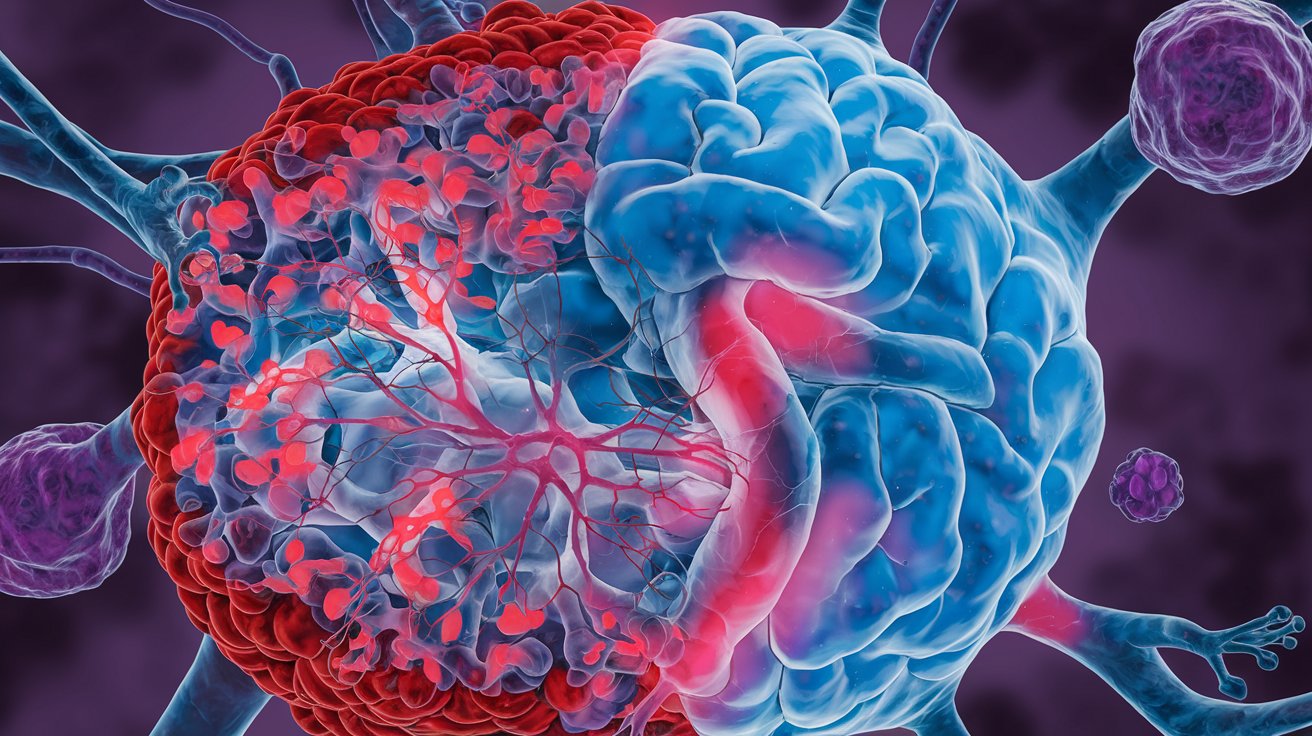
Chimerism is a mind-blowing phenomenon where one organism has cells with different DNA. Imagine having two sets of genetic blueprints in one body! This can happen naturally or be created in labs. From humans to anglerfish, chimerism pops up in surprising places. It can lead to unique health issues, like autoimmune diseases or disorders of sex development. Scientists use molecular techniques to identify chimeras, and the condition even has forensic and ethical implications. Whether it's helping in medical research or sparking debates, chimerism is a topic that blends science, medicine, and ethics in fascinating ways.
Key Takeaways:
- Chimerism is a fascinating biological phenomenon where an organism contains cells with different genetic makeup, impacting health and identity. It occurs naturally and through medical procedures, with implications for various aspects of life and science.
- Identifying and understanding chimerism involves advanced molecular techniques and is crucial for medical science. Chimerism can have diverse effects, from autoimmune diseases to complex health issues, and occurs not only in humans but also in other species.
What is Chimerism?
Chimerism is a captivating biological phenomenon where an organism contains cells with more than one distinct genotype. This condition can occur naturally or through laboratory manipulation, affecting various aspects of life and science.
-
Definition of Chimerism: Chimerism is a condition where a single organism contains at least two genetically distinct cell lines. This means different cells in the same body have different sets of DNA.
-
Types of Chimerism: There are several types, including natural chimerism, fusion chimerism, microchimerism, and twin chimerism.
-
Examples of Natural Chimerism: Documented in various species, including humans, where two fertilized eggs fuse during early development.
-
Anglerfish Chimerism: In Ceratioid anglerfish, chimerism is essential for their life cycle. The male becomes part of the female's body, providing sperm for fertilization.
Human Chimerism
Human chimerism can be innate or synthetic, with significant implications for health and identity.
-
Human Chimerism: Innate chimerism occurs naturally, such as in non-identical twins through blood vessel anastomoses. Synthetic chimerism is acquired through organ transplantation or blood transfusion.
-
Mosaicism vs. Chimerism: Mosaicism involves a mutation in a cell, creating a subset of different cells. Chimerism involves the fusion of more than one fertilized zygote.
-
Chimera Formation: Chimeras can form through zygote fusion, feto-maternal cell trafficking, or blood vessel anastomoses.
-
Prevalence of Human Chimeras: The prevalence is unknown but hypothesized to be as high as 10%. Most remain undiagnosed.
Identifying and Understanding Chimerism
Identifying chimerism involves advanced molecular techniques, and understanding its effects is crucial for medical science.
-
Identification of Chimerism: Molecular techniques like SNP array analysis help identify chimerism.
-
Symptoms of Chimerism: Symptoms vary widely. Some cases are asymptomatic, while others lead to autoimmune diseases or disorders of sex development.
-
Microchimerism Effects: Fetal cells can persist in a mother's body for up to 30 years, contributing to autoimmune diseases but also repairing maternal injuries.
-
Fusion Chimerism Effects: Results in tetragametic individuals with varying degrees of intersex differences.
-
Twin Chimerism Effects: Can lead to complex health issues, such as ambiguous genitalia or disorders of sex development.
Chimerism in Other Species
Chimerism is not limited to humans; it occurs in many other species, providing insights into evolutionary biology.
-
Chimera and Mosaicism in Plants: Occurs naturally during development but is typically excluded from genetic chimerism definitions.
-
Chimera in Fungi and Red Algae: Multinucleated cells in fungi and red algae are not considered chimeric under strict definitions.
-
Chimera in Animals: Occurs naturally in many animal species, such as certain fish.
Case Studies and Clinical Implications
Case studies provide real-world examples of chimerism, highlighting its clinical implications.
-
Chimera in Humans – Case Studies: Documented cases include a parthenogenetic 46,XX/46,XY chimera with ambiguous genitalia and successful IVF treatment of an oligospermic male with 46,XX/46,XY chimerism.
-
Chimera and Transplantation: Artificial chimerism can be induced through organ transplantation or blood transfusion.
-
Chimera and Immune System: Chimerism can affect the immune system, leading to potential autoimmune diseases but also contributing to immune tolerance.
-
Chimera and Cancer: Research suggests taxa with higher levels of chimerism have higher tumor invasiveness, though no direct association with malignancy.
Ethical Considerations and Research Applications
The creation and study of chimeras raise ethical questions and have significant research applications.
-
Chimera and Ethics: The creation of chimeras, especially using human cells, raises ethical concerns about human identity and dignity.
-
Chimera in Embryogenesis: Can lead to complex developmental issues, such as individuals with bilateral scrotal ovotestes and ovulatory activity.
-
Chimera and Forensic Science: Has forensic implications, such as disputed maternity cases leading to the identification of tetragametic chimerism.
-
Chimera and Non-Invasive Prenatal Tests (NIPT): Fetal cells passing the placental barrier contribute to microchimerism, exploited for NIPT using cell-free fetal DNA.
-
Chimera and Autoimmune Diseases: Fetal cells can contribute to autoimmune diseases in mothers but also repair maternal injuries.
Disorders and Genetic Counseling
Chimerism can lead to various disorders, making genetic counseling crucial for affected individuals.
-
Chimera and Disorders of Sex Development (DSD): Leads to DSD with varying degrees of intersex differences.
-
Chimera and Karyotype: Results in complex karyotypes, leading to developmental abnormalities.
-
Chimera and Phenotype: The phenotype can vary widely, leading to complex health issues and diagnostic challenges.
-
Chimera and Genetic Counseling: Essential for diagnosing and managing chimerism, providing appropriate care and support.
Molecular Techniques and Ethical Debates
Advanced molecular techniques are vital for studying chimerism, while ethical debates continue.
-
Chimera and Molecular Techniques: Techniques like SNP array analysis are crucial for identifying and characterizing chimerism.
-
Chimera and Ethical Considerations: Ethical considerations include the potential for creating part-human chimeras and implications for human identity.
-
Chimera in Laboratory Settings: Can be induced through procedures like transplanting human brain cells into mice, raising ethical concerns.
-
Chimera and Research Applications: Includes studying immune tolerance and developing new treatments for autoimmune diseases.
Clinical and Forensic Implications
Chimerism has significant clinical and forensic implications, affecting medical care and legal proceedings.
-
Chimera and Clinical Implications: Includes potential autoimmune diseases and disorders of sex development.
-
Chimera and Forensic Implications: Has forensic implications, such as disputed maternity cases.
-
Chimera and Ethical Debates: Ethical debates include creating part-human chimeras and implications for human identity.
Public Perception and Scientific Community
Public perception and the scientific community play crucial roles in understanding and addressing chimerism.
-
Chimera and Public Perception: Often influenced by media coverage and scientific reporting, requiring accurate information.
-
Chimera and Scientific Community: Ongoing research and collaboration are necessary to address complex issues.
Medical Ethics and Genetic Disorders
Medical ethics and understanding genetic disorders are essential for managing chimerism.
-
Chimera and Medical Ethics: Healthcare providers must consider ethical implications when diagnosing and treating chimeric individuals.
-
Chimera and Genetic Disorders: Can lead to genetic disorders like Beckwith-Wiedemann syndrome, associated with androgenetic chimerism.
Reproductive Health and Developmental Biology
Chimerism impacts reproductive health and developmental biology, providing insights into human development.
-
Chimera and Reproductive Health: Impacts reproductive health, particularly in cases of tetragametic chimerism.
-
Chimera and Developmental Biology: Understanding how chimerism affects embryogenesis and fetal development is crucial.
Evolutionary and Conservation Biology
Chimerism provides insights into evolutionary and conservation biology, affecting species diversity and population dynamics.
-
Chimera and Evolutionary Biology: Offers insights into evolutionary biology, suggesting it has occurred throughout history.
-
Chimera and Conservation Biology: Understanding its effects on species diversity and population dynamics is crucial for conservation strategies.
Environmental and Public Health
Chimerism impacts environmental and public health, highlighting the need for comprehensive approaches.
-
Chimera and Environmental Health: Influences the immune system, potentially leading to autoimmune diseases.
-
Chimera and Public Health: Has significant public health implications, particularly in terms of autoimmune diseases and disorders of sex development.
Healthcare Policy and Patient Education
Healthcare policy and patient education are vital for addressing the needs of chimeric individuals.
-
Chimera and Healthcare Policy: Must consider the unique needs of chimeric individuals, providing access to genetic counseling and medical care.
-
Chimera and Patient Education: Crucial for understanding their condition and managing their health effectively.
Research Funding and Future Directions
Research funding and future directions are essential for advancing our understanding of chimerism.
-
Chimera and Research Funding: Essential for advancing our understanding, requiring prioritization by governments and organizations.
-
Chimera and Future Directions: Future research includes exploring its role in autoimmune diseases, disorders of sex development, and other health issues.
The Fascinating World of Chimerism
Chimerism is a mind-blowing phenomenon where one organism has cells with different DNA. It can happen naturally or be created in labs. There are several types, like natural chimerism from fused embryos, microchimerism from fetal cells in mothers, and twin chimerism from shared blood. This condition can lead to unique health issues, including autoimmune diseases and disorders of sex development. It also has big implications for genetics, medicine, and ethics. Identifying chimerism often requires advanced molecular techniques. The ethical debates around creating part-human chimeras are ongoing. Understanding chimerism helps in genetic counseling, forensic science, and even conservation biology. As research continues, the complexities of chimerism will become clearer, offering new insights into human development and health. This fascinating condition challenges our understanding of identity and biology, making it a crucial area of study.
Frequently Asked Questions
Was this page helpful?
Our commitment to delivering trustworthy and engaging content is at the heart of what we do. Each fact on our site is contributed by real users like you, bringing a wealth of diverse insights and information. To ensure the highest standards of accuracy and reliability, our dedicated editors meticulously review each submission. This process guarantees that the facts we share are not only fascinating but also credible. Trust in our commitment to quality and authenticity as you explore and learn with us.


